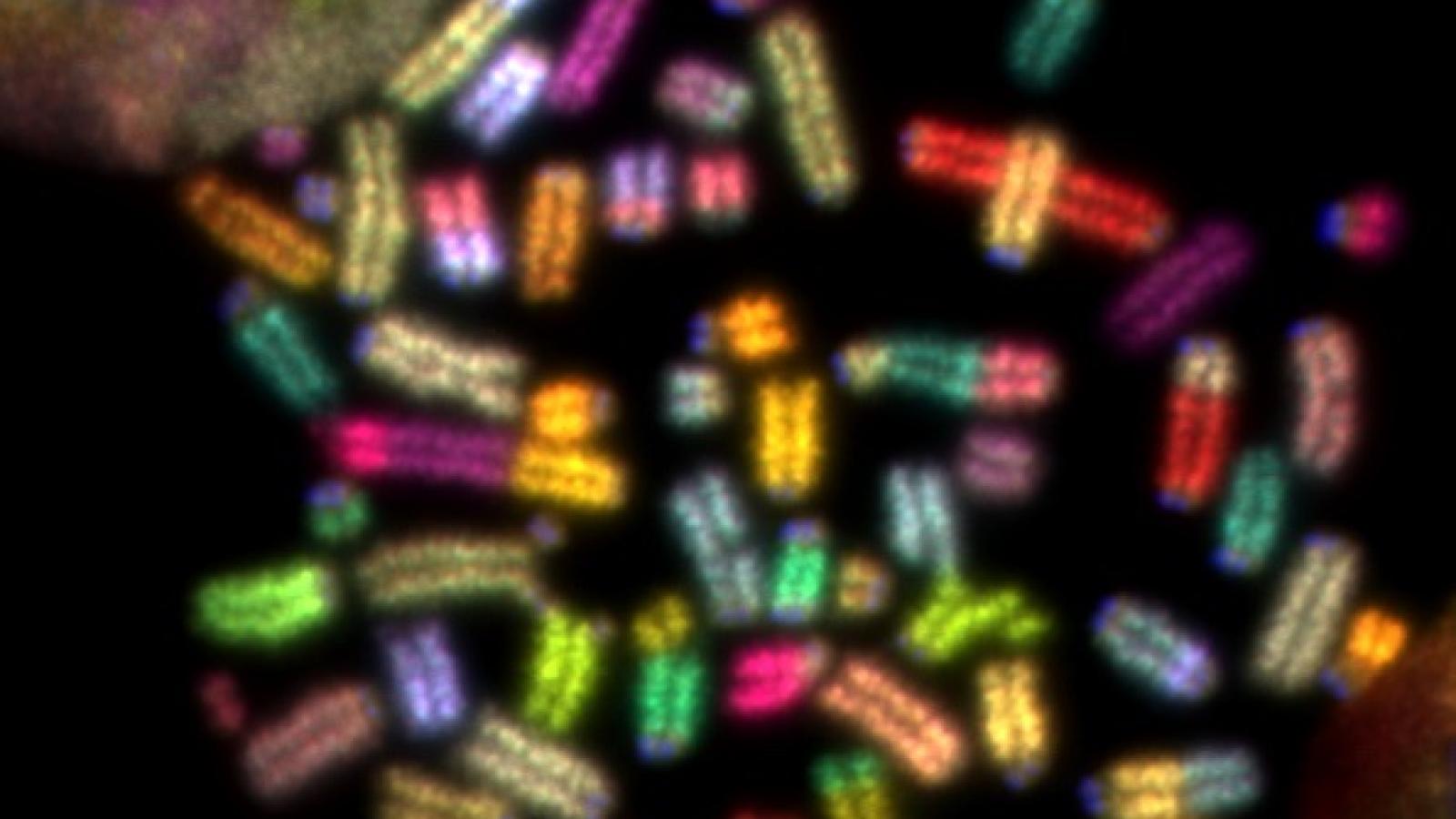A study led by Prof Gabriel Balmus(UK DRI at Cambridge) and Dr David Adams (Wellcome Sanger Institute) has uncovered hundreds of key genes linked to DNA damage, through systematic screening of nearly 1,000 genetically modified mouse lines. The work, published in Nature, provides insights into neurodegenerative diseases, as well as a potential therapeutic avenue in the form of a protein inhibitor.
Prof Gabriel Balmus is an expert in DNA damage and co-lead of the UK DRI DNA Repair research theme, which aims to explore how DNA repair contributes to neurodegeneration and find ways to target these DNA repair pathways for therapeutics.
In the new study, the researchers set out to better understand the biology of cellular health and identify genes key to maintaining genome stability. The team identified 145 genes that play key roles in either increasing or decreasing the formation of abnormal micronuclei structures. These are small abnormal structures, often referred to as "mutation factories," containing misplaced genetic material. Micronuclei indicate genomic instability and DNA damage, common hallmarks of ageing and diseases.
genes were identified
Our study underscores the potential of SIRT inhibitors as a therapeutic pathway for cohesinopathies and other genomic disorders.Prof Gabriel BalmusUK DRI at Cambridge
The most dramatic increases in genomic instability were seen when the researchers knocked out a gene called DSCC1, which increased micronuclei formation five-fold. Mice lacking this gene mirrored characteristics akin to human patients with cohesinopathy disorders, a group of developmental syndromes, further emphasising the relevance of this research to human health.
Using CRISPR screening, researchers showed this effect triggered by DSCC1 loss could be partially reversed though inhibiting protein SIRT1. This offers a highly promising avenue for the development of new therapies. The findings help shed light on genetic factors influencing genome health/DNA damage over a lifespan and disease development.
Prof Balmus explained:
“Continued exploration on genomic instability is vital to develop tailored treatments that tackle the root genetic causes, with the goal of improving outcomes and the overall quality of life for individuals across various conditions. Our study underscores the potential of SIRT inhibitors as a therapeutic pathway for cohesinopathies and other genomic disorders. It suggests that early intervention, specifically targeting SIRT1, could help mitigate the biological changes linked to genomic instability before they progress.”
First author Dr David Adams, Wellcome Sanger Institute, said:
“Genomic stability is central to the health of cells, influencing a spectrum of diseases from cancer to neurodegeneration, yet this has been a relatively underexplored area of research. This work, of 15 years in the making, exemplifies what can be learned from large-scale, unbiased genetic screening. The 145 identified genes, especially those tied to human disease, offer promising targets for developing new therapies for genome instability-driven diseases like cancer and neurodevelopmental disorders.”
To find out more about Prof Gabriel Balmus’s work read our feature ‘Brain mechanics: In conversation with DNA repair expert Gabriel Balmus’, or visit his UK DRI profile.
Reference: Adams, D.J., Barlas, B., McIntyre, R.E. et al. Genetic determinants of micronucleus formation in vivo. Nature (2024). https://doi.org/10.1038/s41586...
Article published: 15 February 2024
Banner image: Fengtang Yang / Wellcome Sanger Institute
